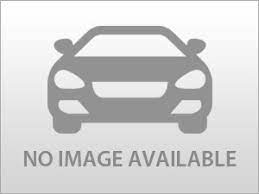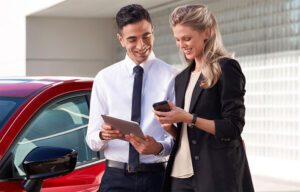Owning a car should be simple, but sometimes the details get confusing. You might know your car’s make and model, like a Honda Civic or a Ford F-150, but then someone asks, “What trim is it?” and everything suddenly feels unclear. Names like LX, EX, Sport, Limited, and Touring can sound a bit confusing
The trim level is actually an important detail. It tells you what features your car has, what the interior is like, and even how much the car is worth. The good news is that you do not have to guess or rely on memory.
This article will show some key aspects of vehicle trim levels. We will also answer the question, “What trim is my car by VIN?” and explain how to check it with a free vehicle trim lookup.
What Is a Vehicle Trim? (Car Trim Meaning)
Most people understand the idea of a car model. A Honda Civic is a Honda Civic. A Toyota Camry is a Toyota Camry. But inside each model, there are multiple versions with different equipment levels, performance setups, interior materials, tech features, and so on. Those versions are called trims.
Trim levels represent various versions of a vehicle model, distinguished by a unique combination of features, equipment, and optional packages. This differentiation allows consumers to select a vehicle that aligns with their preferences and budgetary constraints.
For example:
- A Civic LX might come with cloth seats, a standard radio, and basic safety features.
- A Civic EX adds heated seats, better speakers, and more tech.
- A Civic Touring adds luxury finishes, advanced driving assistance, and premium comfort.
The price increases as the trim level increases because you’ll be getting more features, more performance, and more comfort. Let’s look at some other examples across different brands:
| Model | Entry Trim (Basic) | Mid Trim (Balanced) | High Trim (Premium) | What Changes |
|---|---|---|---|---|
| Honda Civic | LX | EX | Touring | Seat materials, audio quality, screen size, safety tech, engine tuning |
| Toyota Camry | LE | SE | XLE | Suspension feel, cabin comfort, wheel design, interior trim pieces |
| Ford F-150 | XL | XLT | Lariat | Work truck simplicity, added tech, and luxury interior features |
So when someone asks, “What is trim on a car?” they’re asking which version of your model you have because that tells them what features it came with.
Note also that different car manufacturers use different naming conventions for their trim levels. So, the specific trims offered for a car model will vary depending on the make and model.
How to Find Out What Trim My Car is by VIN
Your VIN is the most reliable way to identify your trim because it is directly tied to your car’s factory build record. So with the VIN and the help of a VIN decoder, you can check your car’s trim and other specifications, including the model year, make, model, engine specifications, body style, and even vehicle history records.
To find out what trim your car is, simply follow these steps:
- Locate Your VIN: The Vehicle Identification Number (VIN) is a unique code that contains information about your car, including the trim level. You can find the VIN on the driver’s side dashboard, on a sticker on the driver’s doorjamb, or on your car’s registration documents.
- Use an Online VIN Decoder: Once you find the VIN, you can know what trim your car is free of charge using our free VIN decoder. Just enter the VIN into the form and submit it.
- Identify your Trim: The tool will list various details about your car, including the specific trim level.
Now you know how to find out your vehicle’s trim easily.
Why Do You Need to Check Your Vehicle’s Trim?
You need to check your vehicle’s trim to ensure that you’re getting the correct parts and features for a purchase or repair or to know the vehicle’s true value. Here are some more reasons checking the trim matters:
1. Helps You Choose the Right Parts
When you need replacement parts like headlights, mirrors, sensors, or seats, the trim level influences what parts you would get. If you don’t know the trim of your vehicle, you may end up with a part that doesn’t fit your car.
2. Affects the Car’s Value
Higher trims usually have better upgrades, like touchscreen controls or displays, leather seats, advanced safety features, better wheels, and so on.
These luxury features can greatly affect how much a vehicle is worth while getting insurance, during sales, or if you’re trading in your vehicle. A higher trim equals a higher resale price.
3. Determines Available Features
Some trims have special features that others don’t, such as:
- Sunroof
- Heated seats
- Smarter cruise control
- Backup cameras or parking sensors
Knowing your trim helps you understand what your car can and can’t do.
4. Makes Car Buying Easier
If you’re interested in buying a car, knowing the trim level can help with better comparisons. You can compare comfort features like basic seats vs. premium seats, or tech features like a simple radio vs. a big infotainment screen, and other features.
With this much information, you can avoid paying for features that you don’t need and prevent missing out on features you need.
Other Ways to Know What Your Car Trim Is (Without VIN)
If you don’t have the VIN and you’re still asking the question “what trim level is my car?” don’t worry; you can still check using a license plate lookup. The license plate number will be decoded, and your vehicle’s trim as well as other vehicle specifications and history will be provided immediately.
There are also other alternatives you can try if you still don’t know your car’s trim. They are:
1. Check the Owner’s Manual
The manual should have a section detailing the different trim levels offered for your car model year and the features included in each. If you lost your owner’s manual, online libraries like ManualsLib can be a great place to look for them.
Additionally, some manufacturers also have official manual libraries on their websites. Here are some examples:
2. Look for Trim Badges
Many car manufacturers place badges on the vehicle’s exterior that denote the trim level. These badges are typically found on the trunk lid, fenders, or grille. For instance, a Honda Accord LX might have an “LX” badge on the trunk, while a Toyota Camry XLE might have an “XLE” badge on the fenders.
3. Examine Vehicle Features
If you can’t find any badges and don’t have the owner’s manual, closely examine the car’s features. Does it have leather seats, a sunroof, or a navigation system? These features can be clues to the trim level. You can find online resources that compare features of various trims for specific car models.
4. Consult a Dealership or Mechanic
Still stuck? Head to your local dealership’s service department or a trusted mechanic. They should be able to identify the trim level based on the car’s features or by decoding the VIN.
Related Vehicle Lookup Tools You Should Try!
To make your vehicle research easier, here are a few helpful tools you can use alongside trim lookup:
View the original factory window sticker to see all the features, options, pricing, and specifications a vehicle came with when new.
Check any vehicle’s original interior and exterior colors for accurate paint matching during car buying, repairs, or touch-ups.
Easily verify the past ownership history records and view the number of previous owners, duration of ownership, and location.
Are Car Options the Same as Trim Levels?
No, car options are not the same as trim levels, although they are closely related. A trim level is a package of features that comes standard with the vehicle, like interior materials or technology. Car options refer to the additional features you can choose to add to the standard equipment of a car model.
Car options can improve a car’s comfort, convenience, technology, performance, safety, or appearance. Here’s a breakdown of the different types of car options:
Comfort and Convenience Options
These options are designed to make your driving experience more enjoyable and effortless. Examples include:
- Heated seats
- Ventilated seats
- Sunroof or moonroof
- Sunroof Car Option
- Power Liftgate
- Power Liftgate Car Option
- Keyless entry and ignition
- Keyless Entry Car Option
- Dual-zone climate control
- Dual Zone Climate Control Car Option
- Memory seats
- Rain-sensing wipers
- Rain Sensing Wipers Car Option
Technology Options
These options integrate the latest technology features to provide information, entertainment, and connectivity in your car. Examples include:
- Larger touchscreen infotainment system
- Premium sound system
- Navigation system
- Apple CarPlay or Android Auto
- Wi-Fi hotspot
- Head-up display
- Head Up Display Car Option
- Driver-assistance features like blind-spot monitoring, lane departure warning, and automatic emergency braking
Performance Options
These options enhance a car’s handling, acceleration, and overall driving dynamics. Examples include:
- More powerful engine
- Sportier suspension
- Upgraded brakes
- Performance tires
- Performance Tires Car Option
- Limited-slip differential
Safety Options
These options provide additional features to protect you and your passengers on the road. Examples include:
- Forward collision warning
- Forward Collision Warning Car Option
- Automatic emergency braking
- Lane departure warning
- Blind-spot monitoring
- Rear cross-traffic alert
- Surround-view camera system
Appearance Options
These options allow you to personalize the look of your car. Examples include:
- Alloy Wheels Car Option
- Sunroof or moonroof
- Spoiler
- Paint color choices
- Leather upholstery
Conclusion
Knowing your car’s trim level doesn’t have to be confusing. With just your VIN, you can quickly identify your exact trim and understand the features, value, and parts your vehicle was built with.
Remember, the more you know about your vehicle, the easier it is to take care of it and make informed decisions. So take a moment, check your trim, and drive with confidence.
FAQ About What Trim is My Car by VIN
Can I find out trim with VIN number?
Yes, you can find out any vehicle’s trim with the VIN number using a VIN decoder. The VIN is a unique code that contains information about the vehicle’s specs and features, including the trim. To check the trim with the VIN number, you just need to enter the VIN into the VIN decoder form on this page and submit it. The VIN will be decoded instantly and trim level will be provided.
Can I look up my vehicle specs with VIN?
Yes, you can look up your vehicle’s specs with the VIN using a VIN decoder available on our website. The VIN decoder breaks down the VIN to provide information such as the vehicle’s year, make, model, trim, engine specifications, transmission, vehicle type, body style, and more.
How do I know what my vehicle type is?
You can figure out your car’s type by looking at the badges or emblems on the outside of the car, usually found on the trunk or rear area. You can also check paperwork like the registration, title, or insurance documents. However, the most accurate way is to use the Vehicle Identification Number (VIN). This 17-character code can be entered into an online decoder to show your car’s exact make, model, year, and features.










